How Smart Home Systems Affect Appliance Repairs: What Maple Ridge Homeowners Need to Know Before Calling a Technician
Wondering why your smart refrigerator keeps disconnecting from Wi-Fi or your connected dishwasher won’t respond to voice commands? Smart home appliances bring incredible convenience to Maple Ridge homes, but they also introduce complex repair challenges that go far beyond traditional mechanical fixes.
The integration of smart technology into home appliances has fundamentally transformed the repair landscape for homeowners throughout British Columbia. While these connected devices offer unprecedented convenience through Wi-Fi connectivity, app control, and automated features, they also present unique diagnostic challenges that require specialized expertise in both hardware and software systems. This technological evolution has created a scenario where a simple appliance malfunction can stem from connectivity issues, software glitches, firmware conflicts, or traditional mechanical failures.
Understanding how smart home systems affect appliance repairs is crucial for making informed decisions about maintenance, troubleshooting, and when to call professional help. The complexity of modern connected appliances means that what appears to be a simple fix might actually require specialized knowledge of networking protocols, software diagnostics, and IoT integration. For Maple Ridge homeowners investing in smart appliances, this knowledge can save both time and money while ensuring optimal performance of their connected home ecosystem.
The shift toward smart appliances has also changed the skill requirements for repair technicians, who now need training in both traditional mechanical systems and modern digital technologies. This evolution affects everything from diagnostic procedures to repair costs, making it essential for homeowners to understand these changes before their next service call.
Key Outtakes:
- Smart appliances experience connectivity problems up to 70% more frequently than traditional mechanical failures, requiring specialized diagnostic approaches
- Wi-Fi network issues, particularly 2.4GHz band conflicts, are the primary cause of smart appliance malfunctions rather than hardware problems
- DIY repairs on smart appliances can void warranties and potentially compromise home network security
- Professional technicians now require training in both traditional repair methods and IoT technologies, networking protocols, and software troubleshooting
- Predictive maintenance through smart appliance diagnostics can prevent costly breakdowns and extend appliance lifespan significantly
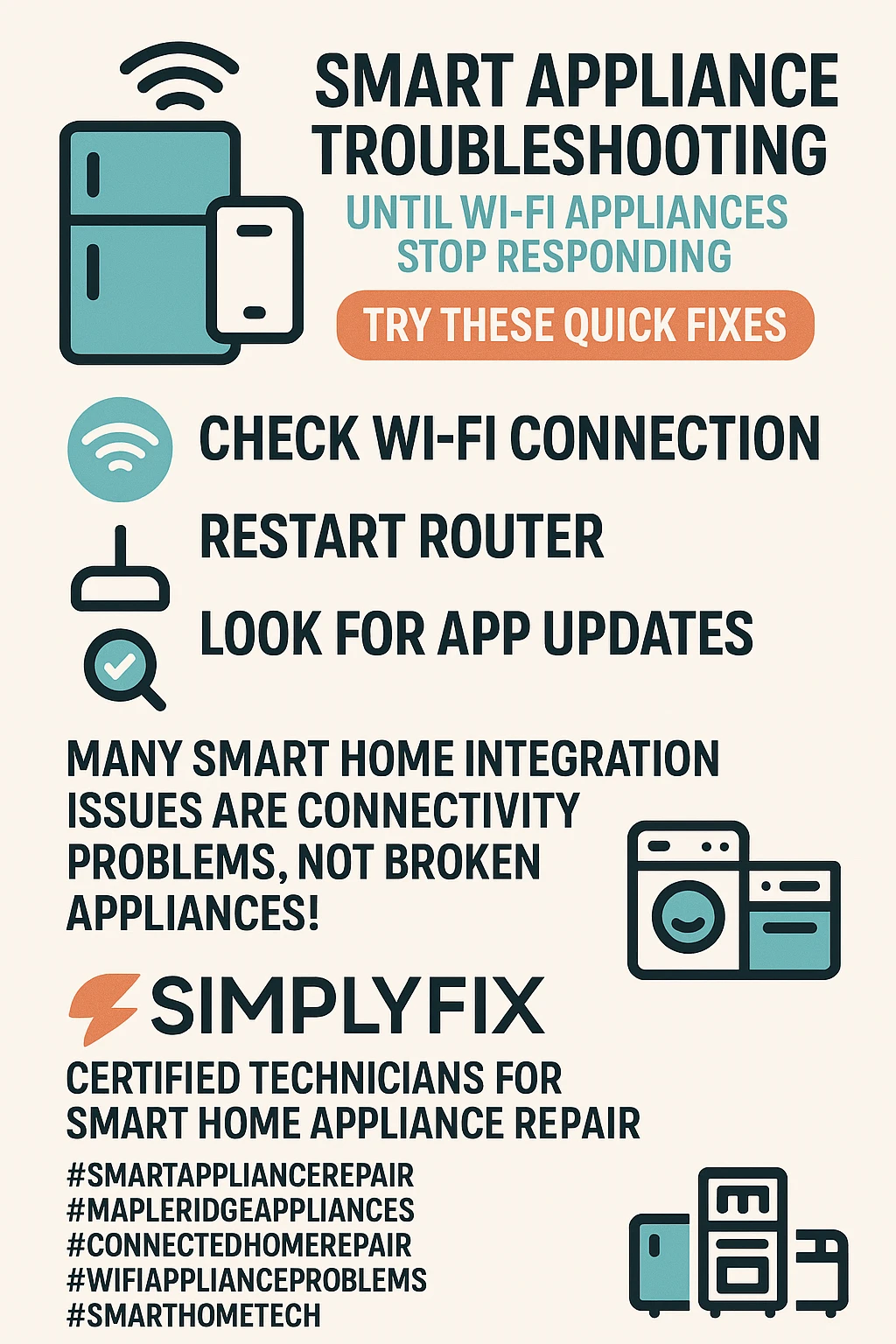
Understanding the New Repair Landscape
The evolution from traditional to smart appliances has created a fundamental shift in how repair services approach diagnostics and problem-solving. Previous generations of appliances relied primarily on mechanical systems with straightforward failure points, making diagnosis relatively simple for experienced technicians. Today’s smart appliances combine these mechanical systems with complex electronics, software platforms, and network connectivity, creating multiple potential failure points that require different expertise to address.
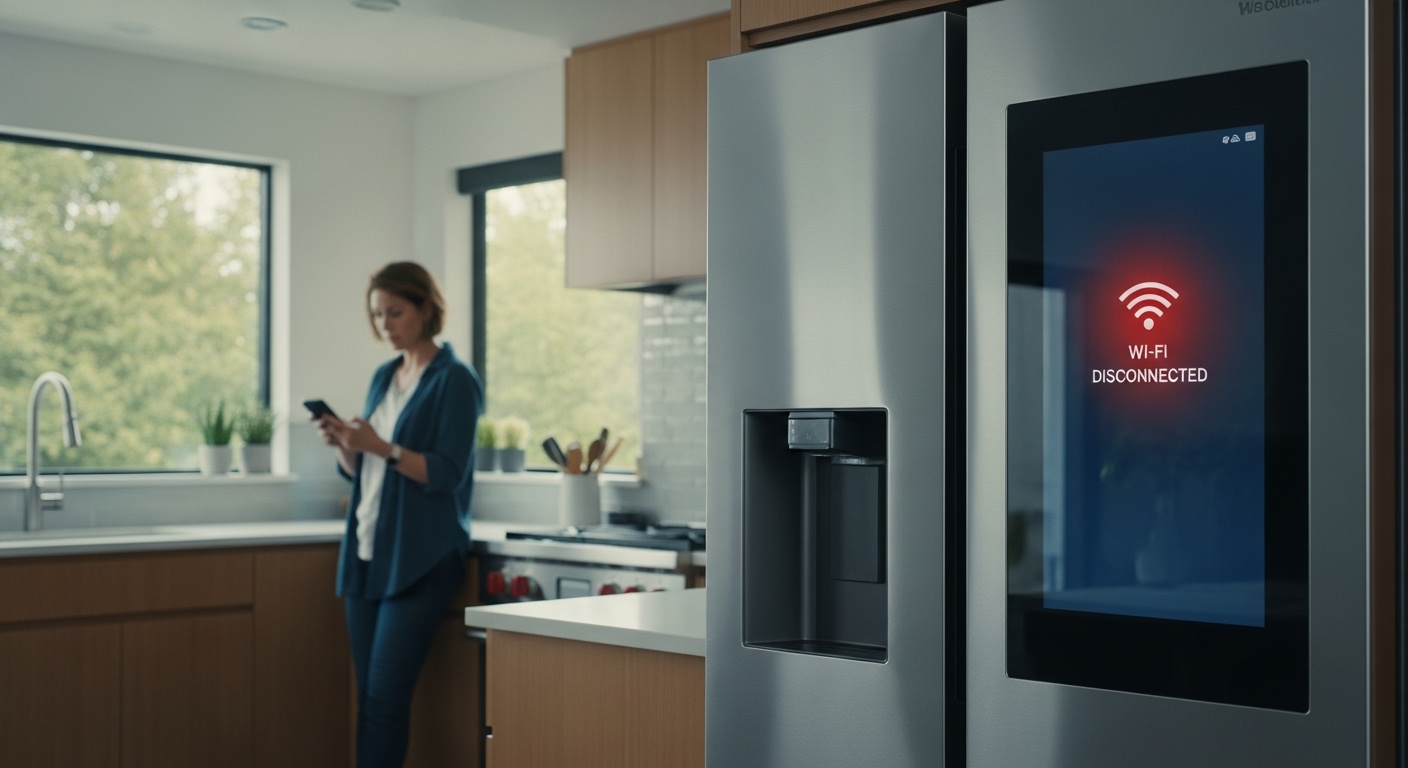
This complexity has transformed the appliance repair industry, which has grown to $35.82 billion globally in 2025. Smart appliances now require technicians to understand not only traditional mechanical repairs but also network connectivity, embedded software, IoT protocols, and smart diagnostics platforms. The integration of artificial intelligence and machine learning in modern appliances adds another layer of complexity that affects both diagnosis and repair procedures.
Modern appliance repair technicians must now possess skills in Wi-Fi troubleshooting, router configuration, software diagnostics, and mobile app integration alongside their traditional mechanical knowledge. This expanded skill set reflects the reality that today’s appliances are essentially computers with mechanical components, rather than mechanical devices with basic electronic controls. The training requirements for technicians have expanded significantly to include cybersecurity awareness, as smart appliances often store personal data and connect to home networks.
Smart appliances also connect to centralized platforms like Amazon Alexa, Google Home, and Apple HomeKit, creating interdependencies that can affect repair approaches. When one device experiences connectivity issues, it can impact the entire home automation system. This interconnectedness means that technicians must understand how appliances interact within broader smart home ecosystems, not just how individual units function in isolation.
The benefits of this technological advancement include remote diagnostics capabilities, predictive maintenance alerts, and the ability to troubleshoot some issues without requiring in-person service visits. However, these benefits come with increased complexity that affects both the time required for repairs and the specialized knowledge needed to perform them effectively.
Most Common Smart Appliance Issues
Wi-Fi connectivity problems represent the most frequent issue affecting smart appliances in Maple Ridge homes. These connectivity challenges often stem from network configuration issues rather than appliance defects. Many smart appliances only support 2.4GHz Wi-Fi networks, while modern routers default to 5GHz bands for better performance. This compatibility mismatch causes appliances to appear offline even when the home network is functioning normally.
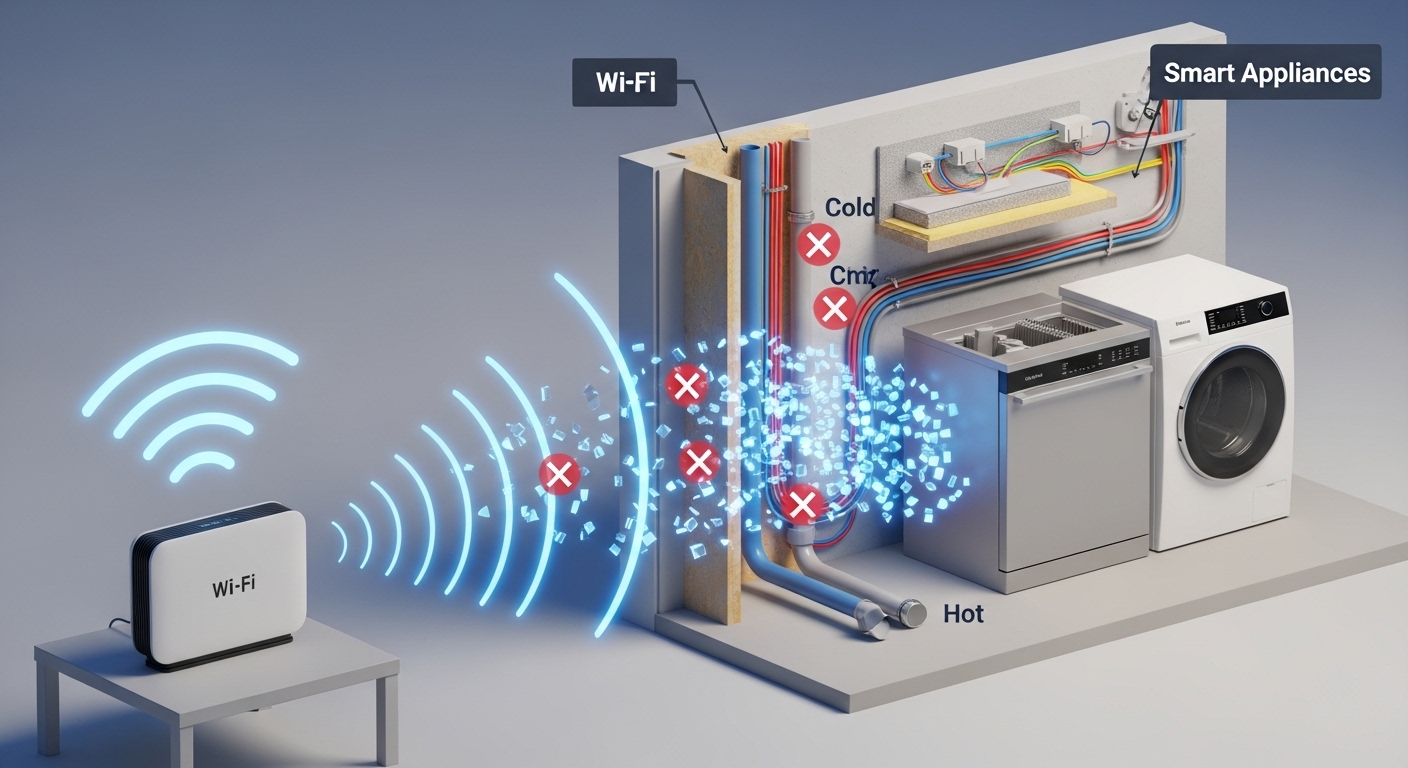
Physical placement significantly affects connectivity reliability for smart appliances. Devices installed near metal surfaces, thick walls, concrete foundations, or other electronics often experience signal interference that disrupts their network connection. Common Wi-Fi problems in smart homes frequently relate to signal strength and interference rather than appliance hardware failures. Distance from wireless routers also plays a crucial role, as appliances in basements, garages, or far corners of homes may struggle to maintain stable connections.
Software and firmware glitches constitute the second most common category of smart appliance problems. These issues manifest as unresponsive controls, failed automation routines, or appliances that appear to work mechanically but cannot communicate with apps or voice assistants. Smart appliances rely on complex software systems that can experience bugs, crashes, or compatibility issues, particularly after automatic updates. Unlike traditional appliances that could function for decades without software updates, smart appliances require regular firmware updates to maintain optimal performance and security.
App-related malfunctions create another frequent source of frustration for smart appliance users. Mobile applications can crash, fail to send commands, lose synchronization with appliances, or become incompatible with phone operating system updates. These issues often require app reinstallation, phone restarts, or complete device re-pairing to resolve. The dependency on smartphone apps means that problems with mobile devices can directly impact appliance functionality, creating a new category of issues that traditional repair services weren’t equipped to handle.
Integration failures between different smart home platforms also cause significant problems. When appliances lose connection to Alexa, Google Assistant, or Apple HomeKit, users may assume the appliance itself is broken when the issue actually lies in the communication protocols between systems. These integration problems require understanding of multiple platforms and their interaction requirements, knowledge that extends far beyond traditional appliance repair expertise.
Diagnostic Complexity in Modern Appliances
The diagnostic process for smart appliances has become significantly more complex than traditional appliance troubleshooting. Modern connected appliances generate detailed error information through sophisticated monitoring systems, but interpreting this data requires specialized knowledge and tools. This complexity has transformed how technicians approach problem identification and resolution.
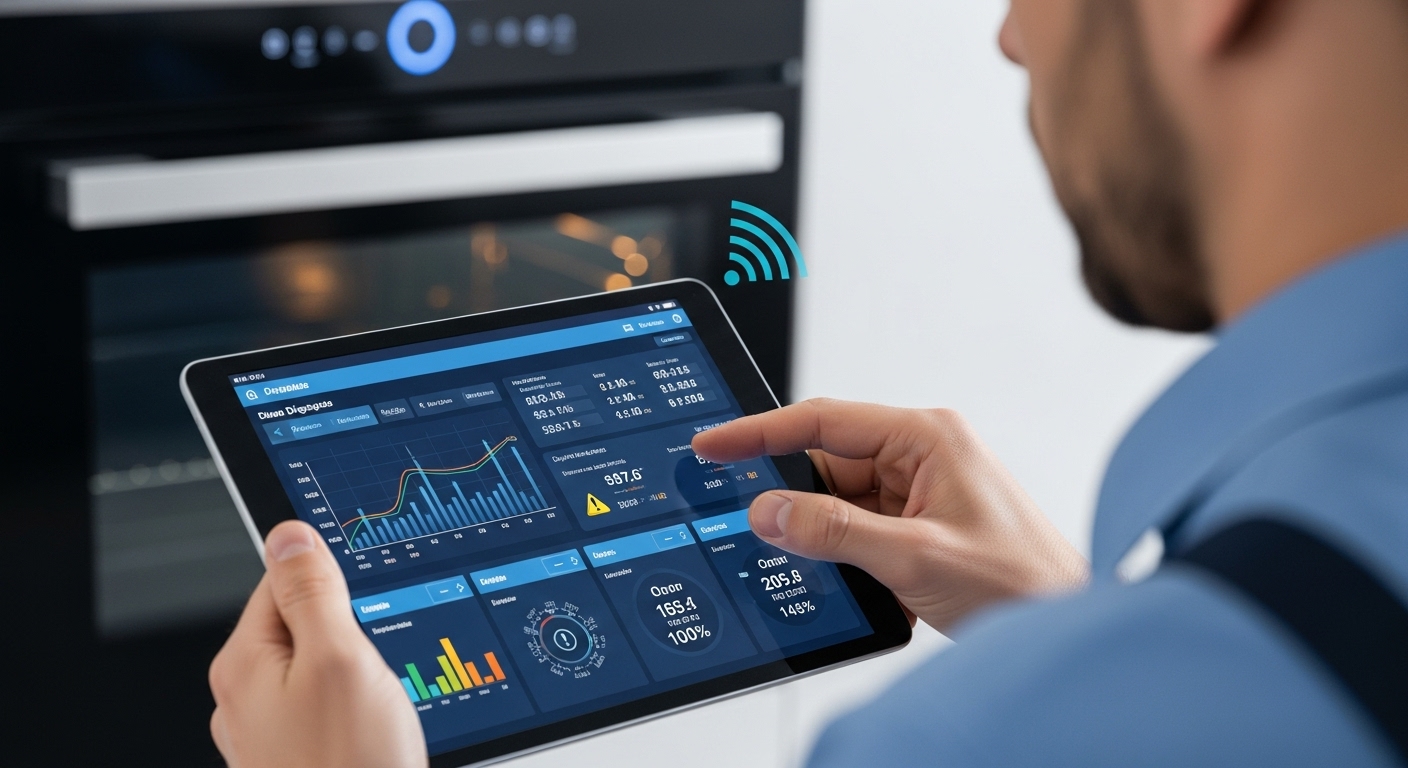
Error code systems in smart appliances provide much more detailed information than their traditional counterparts. Instead of simple blinking lights or basic numeric displays, modern appliances use manufacturer-specific alphanumeric codes that can indicate everything from sensor malfunctions to communication failures. Samsung appliances might display ‘5E’ for sensor failures, while Whirlpool uses ‘F21’ for slow drain problems. These codes can indicate issues ranging from faulty mechanical parts to software conflicts and network communication problems.
Professional diagnostic software has become essential for accurate smart appliance repair. These specialized tools can connect to appliances via Bluetooth or Wi-Fi to run comprehensive tests, analyze performance data, and provide real-time feedback on system status. Advanced diagnostic software uses algorithms to analyze appliance data and provide immediate feedback on problems, but requires training and often licensing fees that increase repair costs.
Remote diagnostic capabilities represent both an opportunity and a challenge for repair services. Many smart appliances can transmit error codes and performance data directly to manufacturers or authorized service centers, potentially expediting repair processes. However, this capability also requires repair services to have proper authorization and access to proprietary diagnostic networks. The ability to diagnose problems remotely can reduce service call requirements, but it also means that technicians need access to cloud-based diagnostic platforms and manufacturer databases.
The integration of artificial intelligence in modern appliances adds another layer of diagnostic complexity. AI-powered appliances can learn user preferences, adjust performance automatically, and even predict potential failures before they occur. While this capability offers significant benefits for preventive maintenance, it also means that diagnostic procedures must account for adaptive behaviors and learning algorithms that can affect appliance performance in unexpected ways.
DIY Troubleshooting vs Professional Service
Understanding the boundaries between safe DIY troubleshooting and necessary professional intervention has become crucial for smart appliance

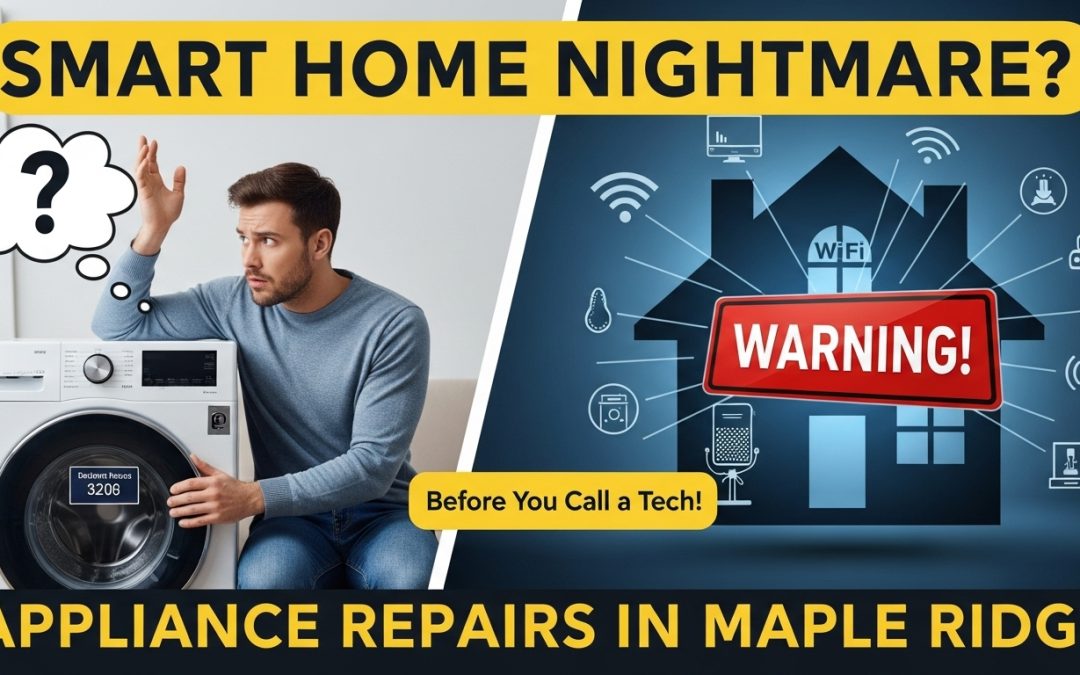
Recent Comments